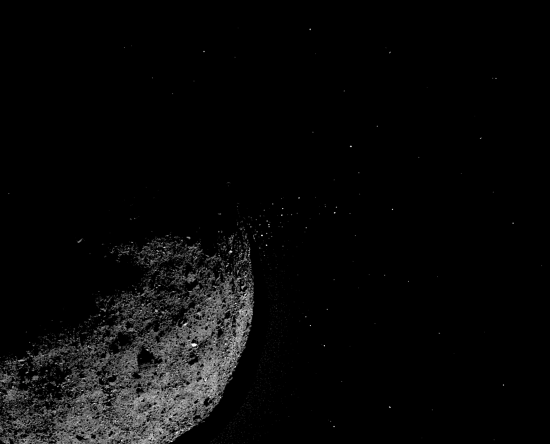
October 14, 2020
Bennu is among 7000 Near Earth Objects (NEO) that orbit the Sun.
The Osiris-Rex mission was launched on September 8, 2016 and is now orbiting 101955 Bennu. Its goal is to collect a sample from the asteroid and return it to Earth.
The biggest surprise, so far, is the discovery of particle emissions from Bennu, or “plumes”. These are charged particles from the asteroid that came as a complete surprise to mission specialists. NASA astrophysicists are planning a manned-mission to a large asteroid at some time in the future, so they are concerned that electrical activity on asteroids will be a problem for future astronauts. Although they discuss electricity, it is not the electrodynamics elucidated by the Electric Universe. They are not certain what causes the plumes.
Many charged particles are accelerated clear of Bennu, circling the asteroid before returning to its surface. An electrical explanation – which rectifies the anomalies in other theories – eludes them, because they know almost nothing about the forces involved, except to parrot: “if there’s electricity in space it doesn’t do anything.”
The shallow craters, along with the sorted boulders, are important to a theory of electrical effects. By thinking only in terms of meteor impacts and other familiar kinetic forces, astronomers ignore the one thing that makes all the disparate features they see cohesive: an electrically dynamic Solar System in its early, formative phases, when cosmic thunderbolts carved the surfaces of planets and moons.
As written previously, when the first Hayabusa mission finally made it back to Earth, there were more than a thousand fragments from asteroid Itokawa inside its collection capsule. The mission team was surprised to find silicates from Itokawa that had been exposed to temperatures in excess of 800 Celsius. Chondritic meteorites are also made of similar stuff. That can only mean that comets, asteroids, and meteoroids share a similar birth.
On October 20, 2020 OSIRIS-REx will touchdown on Bennu, retrieving a sample of between 60 and 2000 grams, and returning it to Earth on September 24, 2023. Final analysis will conclude in 2025. Predictions are that the material will be similar to that already collected from other locations.
Stephen Smith
The Thunderbolts Picture of the Day is generously supported by the Mainwaring Archive Foundation.












